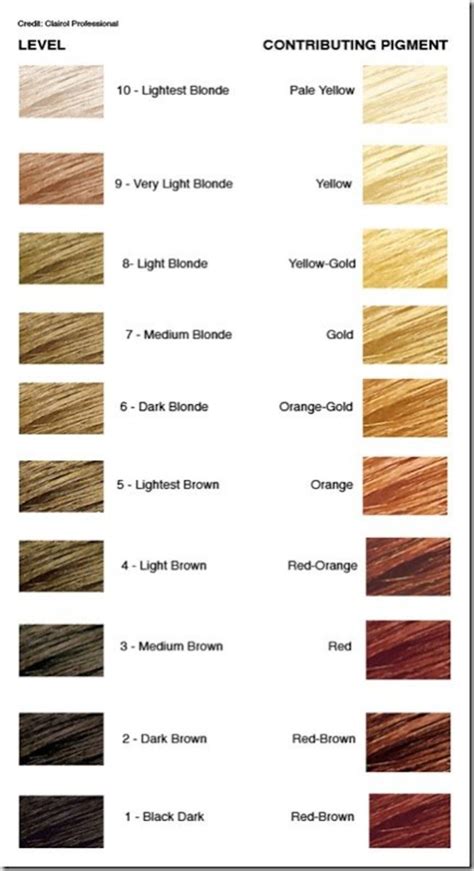Blondes have always been associated with beauty, sophistication, and allure. Over the years, hair color trends have evolved, giving rise to a vast array of blonde shades that cater to every taste and preference. This comprehensive blonde color chart will help you navigate the myriad of options and find the perfect blonde for you.

What is the Fitzpatrick Skin Typing System?
The Fitzpatrick Skin Typing System, developed by Dr. Thomas Fitzpatrick in the 1970s, classifies skin tones based on their response to ultraviolet radiation. This system plays a crucial role in determining the most suitable blonde shades for different skin types.
| Fitzpatrick Skin Type | Description | Typical Hair Color |
|---|---|---|
| I | Very fair, burns easily | Light blonde, platinum blonde |
| II | Fair, burns easily | Golden blonde, light ash blonde |
| III | Medium fair | Medium blonde, honey blonde |
| IV | Medium, slightly tans | Caramel blonde, rich blonde |
| V | Dark, tans easily | Warm blonde, buttery blonde |
| VI | Very dark, rarely burns | Dark blonde, chocolate blonde |
Blonde Color Chart: A Detailed Breakdown
Level 1-10: Blonde shades are categorized on a scale from 1 to 10, with 1 representing the darkest and 10 the lightest.
| Level | Shade | Description |
|---|---|---|
| 1: Black blonde | Very dark, almost black | |
| 2: Dark blonde | Warm, natural-looking blonde | |
| 3: Medium blonde | Golden-brown base with blonde highlights | |
| 4: Light blonde | Warm, sun-kissed blonde | |
| 5: Medium ash blonde | Cool, muted blonde with a hint of gray | |
| 6: Light ash blonde | Cool, icy blonde | |
| 7: Dark platinum blonde | Very light blonde with warm, golden undertones | |
| 8: Medium platinum blonde | Very light blonde with cool, silver undertones | |
| 9: Light platinum blonde | Very light, almost white blonde | |
| 10: Platinum blonde | Pure white blonde |
Tones: Blonde shades can also be described by their tones, which include:
| Tone | Description |
|---|---|
| Cool | Blue-based, ashy blonde |
| Warm | Yellow-based, golden blonde |
| Neutral | A balance of both cool and warm tones |
Tips and Tricks for Choosing the Perfect Blonde
- Consider your skin tone: Refer to the Fitzpatrick Skin Typing System to determine which blonde shades will complement your complexion.
- Match your hair texture: Straight hair can handle lighter shades, while curly hair may look better with darker, warmer tones.
- Enhance your eye color: Blonde shades can accentuate blue, green, and hazel eyes.
- Be mindful of maintenance: Blonder shades require more frequent touch-ups to maintain their vibrancy.
- Consult a professional stylist: A professional hair colorist can help you achieve the perfect blonde shade that suits your individual needs.
Benefits of Blonde Hair
Increased Confidence: Studies have shown that blonde hair can boost self-esteem and confidence.
Versatile Styling: Blonde hair is incredibly versatile and can be styled in a variety of ways, from sleek and sophisticated to bohemian and carefree.
Reflective Glow: Blonde hair reflects light, giving you a more radiant appearance.
Reduced Sun Damage: Blonde hair is less prone to sun damage than darker hair, thanks to its protective melanin content.
FAQs
1. What is the most popular blonde shade?
According to a survey conducted by L’Oréal, medium blonde is the most popular shade worldwide.
2. What is the difference between bleach blonde and platinum blonde?
Bleach blonde is a very light blonde achieved through the use of bleach, while platinum blonde is an even lighter shade with almost white undertones.
3. Can you achieve blonde hair without bleach?
Yes, there are several hair coloring techniques that can help you achieve blonde hair without bleach, such as balayage and ombré.
4. How often should I touch up my blonde hair?
The frequency of touch-ups depends on the desired shade and the rate of hair growth. On average, touch-ups are recommended every 6-8 weeks.
5. Can blonde hair be damaged?
Any hair coloring process can potentially damage hair. However, following the recommended care and maintenance routine can help minimize damage.
Conclusion
The blonde color chart is a valuable tool for anyone considering blonde hair. By understanding the different shades, tones, and levels, you can make an informed decision about the perfect blonde for you. With the right care and maintenance, blonde hair can enhance your beauty, boost your confidence, and bring joy to your life.
